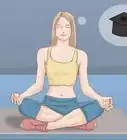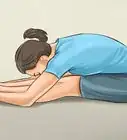X
This article was co-authored by Caitlin Downey. Caitlin Downey is a Registered Yoga Teacher at Yoga Therapy in Burlington, Vermont. She has over 200 hours of experience as a certified Yoga Instructor since 2014, and has over 600 hours of training as a certified Phoenix Rising Yoga Therapist.
This article has been viewed 43,840 times.
The crescent moon pose in yoga is a beginner's pose that's meant to improve core body strength, stretch your sides, and strengthen your ankles and knees.[1] It's a good idea to first attempt the pose with a yoga instructor, to make sure you're doing it correctly so you avoid injury.
Steps
Part 1
Part 1 of 3:
Transitioning from Mountain Pose to Crescent Moon
-
1Get into the starting position for mountain pose. Stand with your feet hip-width apart. Keep your arms at your side, and hold your weight evenly on both feet.
- Start breathing. Focus on getting a steady, rhythmic breath going.
- Push your big toes together and separate your heels slightly.
- Lift up your toes and spread them for a moment. Then, set them back down on the mat one by one. Straighten your legs and transfer some weight to your heels, focusing on pressing your weight evenly across your feet.
-
2Press the soles of your feet to the floor and lift through your legs. Engage your quads to lift your knee caps and rotate your upper thighs slightly inward to widen your sit bones. Slightly tuck your tailbone under and draw your stomach in so that your hips are aligned over your ankles.Advertisement
-
3Breathe as you stretch out your body. Elongate your torso when you inhale. When you exhale, move your shoulder blades towards your waist. As you do so, keep your collarbone broad to stretch out your full body.
- Draw the front of your rib cage down and together to stack your rib cage over your pelvis.
- Stretch your neck, but keep your hips, and shoulders in a straight line. Make sure your chin is in a neutral position and is parallel to the floor.
- Hold this pose for a minute, breathing evenly and steadily.
-
4Raise your hands over your head. From mountain pose, you can transition into crescent pose. To get into the starting position, lift your arms out to the sides then stretch them overhead. Pin your shoulder blades down and back, then lace your fingers together and release your index fingers to point toward the ceiling.[2]
- Press your feet firmly on the floor.
-
5Keep your shoulders and back relaxed. It's very important you relax your shoulders and back. Even while you're reaching up with your hands and arms, you'll want to lower your shoulders and back slightly and allow them to relax.[3]
- This can be difficult to remember, as many people are naturally inclined to stretch up with their whole bodies.
- Keep in mind only your hands, arms, and fingers should be stretching upward. If necessary, move your arms forward slightly in order to straighten them.
Advertisement
Part 2
Part 2 of 3:
Performing the Pose
-
1Create a crescent shape with your body. Shift your hips to the left, reach up through your index fingers and begin to pour them over to the right. Create space in your upper body by rolling the left side of your rib cage up. To square your hips, pull your right hip forward.[4]
- Your body should be in a single linear plane, as though it’s pressed between panes of glass.
-
2Hold the pose and return to the original position. Breathe in and out in a steady fashion. If you're just starting out at yoga, you may only be able to hold the pose for 2 breaths. You do not want to hold the pose any longer than feels comfortable. After holding the pose as long as is comfortable, return to the starting position.[5]
- Inhale as you straighten your torso. You should also press down on your feet until you're back in the original position.
- That is, you should be standing straight up, with your hands held over your head and your fingers interlaced.
-
3Repeat on the other side. This time, you will tilt your right hip to the side while your torso moves to the left. Again, hold the pose as long as you feel comfortable.[6]
- You may be more flexible on one side of your body, so don't be surprised if there's a slight difference in how long you can hold the pose on the other side.
- You can return to mountain pose or put your hands on your lower back and do a mini backbend before folding forward
Advertisement
Part 3
Part 3 of 3:
Keeping Safety in Mind
-
1Work with a yoga instructor. If you've never done yoga before, it's a good idea to work with an instructor. They can help make sure that you don’t strain or injure yourself while performing various poses. Enroll in a yoga class and work on mountain pose and crescent moon pose with an instructor.[7]
- Make sure your yoga instructor has a decent amount of experience, and has completed an instructor training program.
- Enroll in a class suitable for beginners. If you have any special needs, like a chronic health condition, make sure your yoga instructor is familiar working with students with those needs.
-
2Pay attention to signals from your body. It's very important that you ease into the various yoga positions. Pay attention to your body. While discomfort is acceptable, pain is not. If you feel pain during a pose, take a break or modify the pose.[8]
- Yoga is meant to stretch and soothe your body and not to strain it. If a pose is hurting you, do not push it.
- An instructor can help you modify a pose so it's more comfortable for you. You may have to do a modified version of mountain or crescent moon pose until you're ready to do the full pose.
-
3Avoid mountain pose if you have certain health conditions. Mountain pose is a fairly simple pose that's generally safe. However, the pose requires some balance. If you have any health conditions that make you dizzy, you should avoid the pose.
- If you are pregnant, talk to your doctor before attempting any exercise, including yoga.
- If you have a headache, wait until it passes to perform mountain pose.
- If you feel lightheaded or dizzy, avoid mountain pose.
- Insomnia and low blood pressure can also make you disoriented, so it may be best to avoid mountain pose if you have these conditions.
-
4Avoid crescent moon pose if you are injured. It's particularly difficult to do crescent moon pose if you have any recent injuries to the hips, back, or shoulders. If you have chronic pain or injury in these areas, you should also avoid crescent pose.[9]
- Talk to your doctor if you're injured. Work with him or her about when you can return to yoga and which poses, if any, will be safe while your injuries heal.
Advertisement
References
- ↑ https://www.yogabasics.com/asana/crescent-moon/
- ↑ https://www.yogabasics.com/asana/crescent-moon/
- ↑ https://www.yogabasics.com/asana/mountain/
- ↑ https://www.yogabasics.com/asana/crescent-moon/
- ↑ https://www.yogabasics.com/asana/crescent-moon/
- ↑ https://www.yogabasics.com/asana/crescent-moon/
- ↑ http://www.mayoclinic.org/healthy-lifestyle/stress-management/in-depth/yoga/art-20044733?pg=2
- ↑ http://www.mayoclinic.org/healthy-lifestyle/stress-management/in-depth/yoga/art-20044733?pg=2
- ↑ https://www.yogabasics.com/asana/crescent-moon/
About This Article
Advertisement
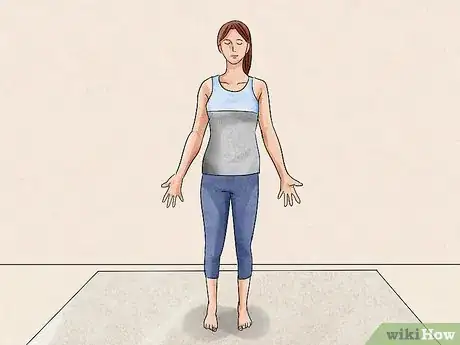

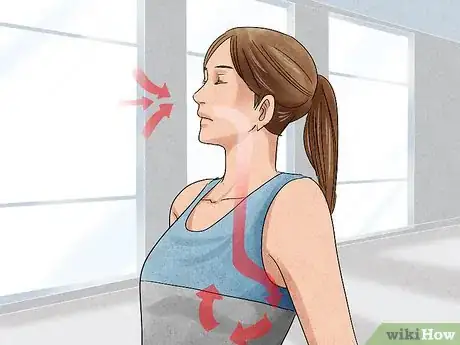
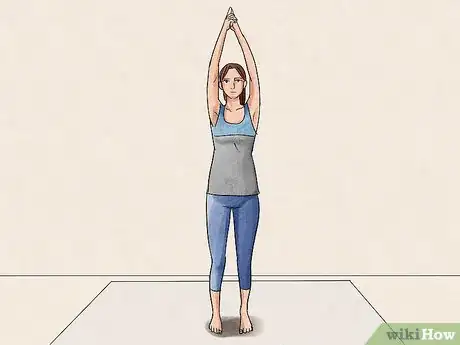
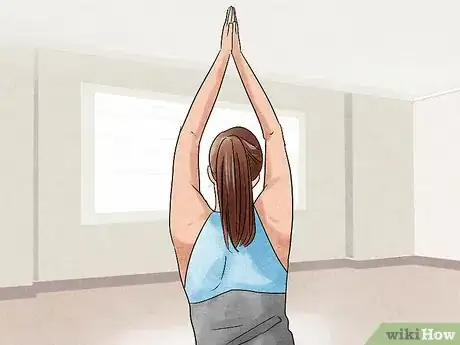
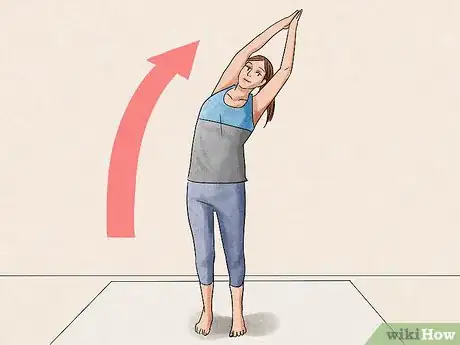
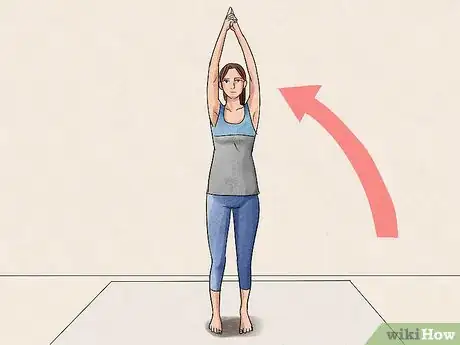
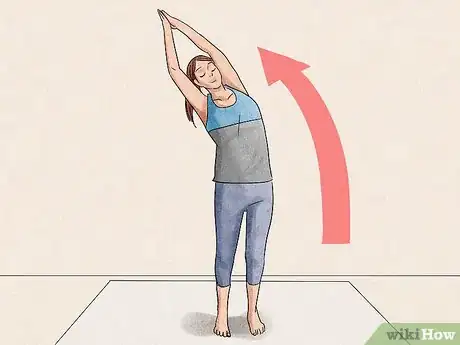

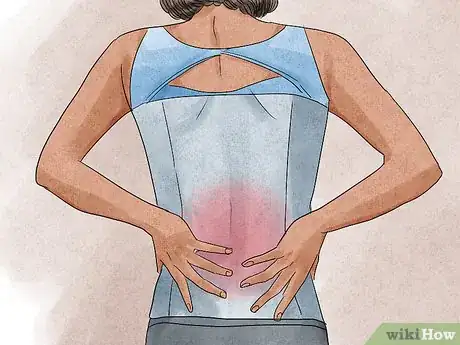
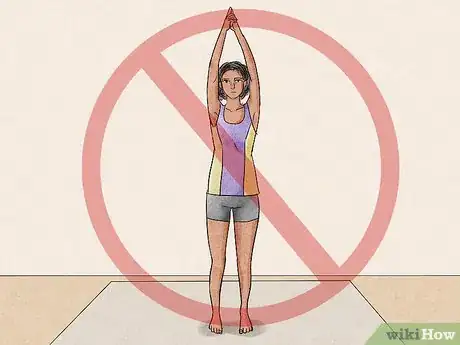
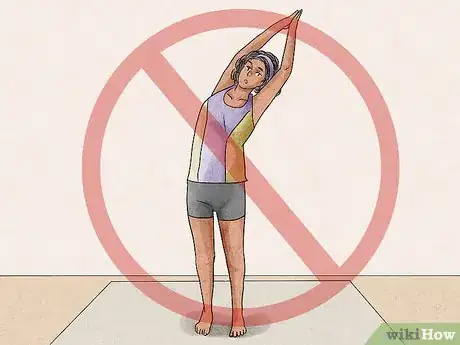



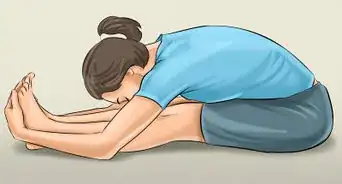





-Step-16.webp)









